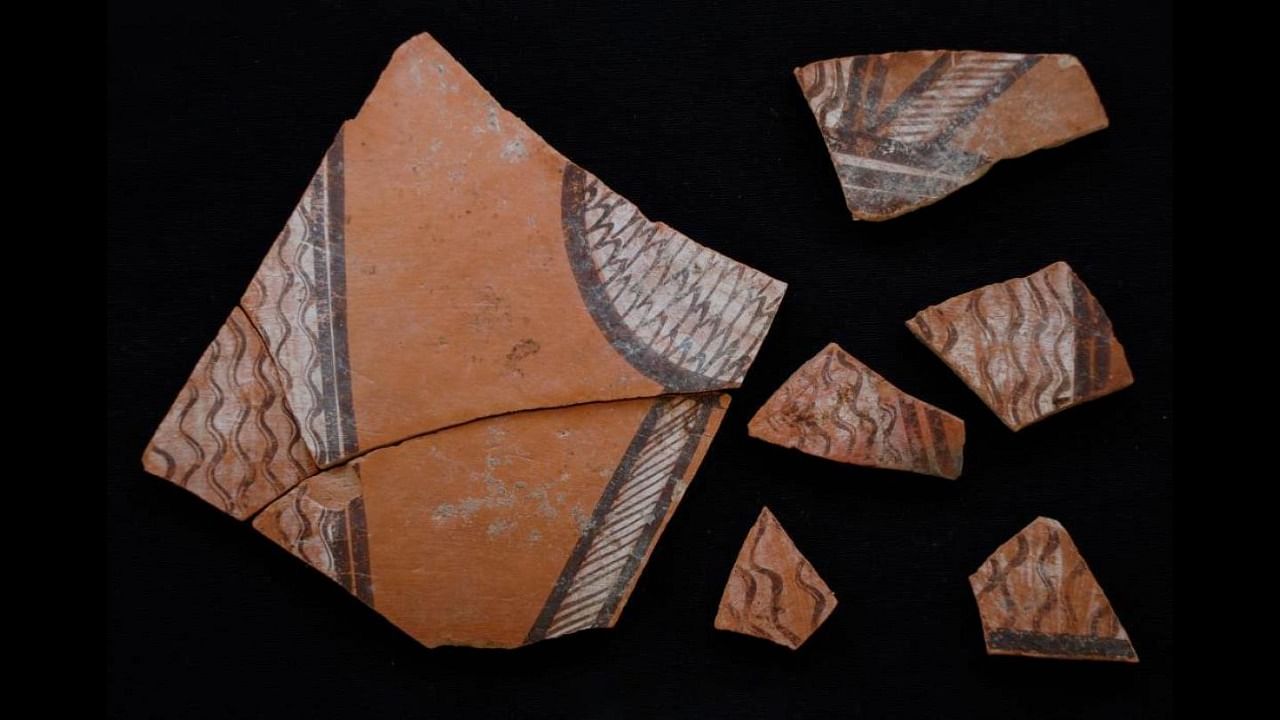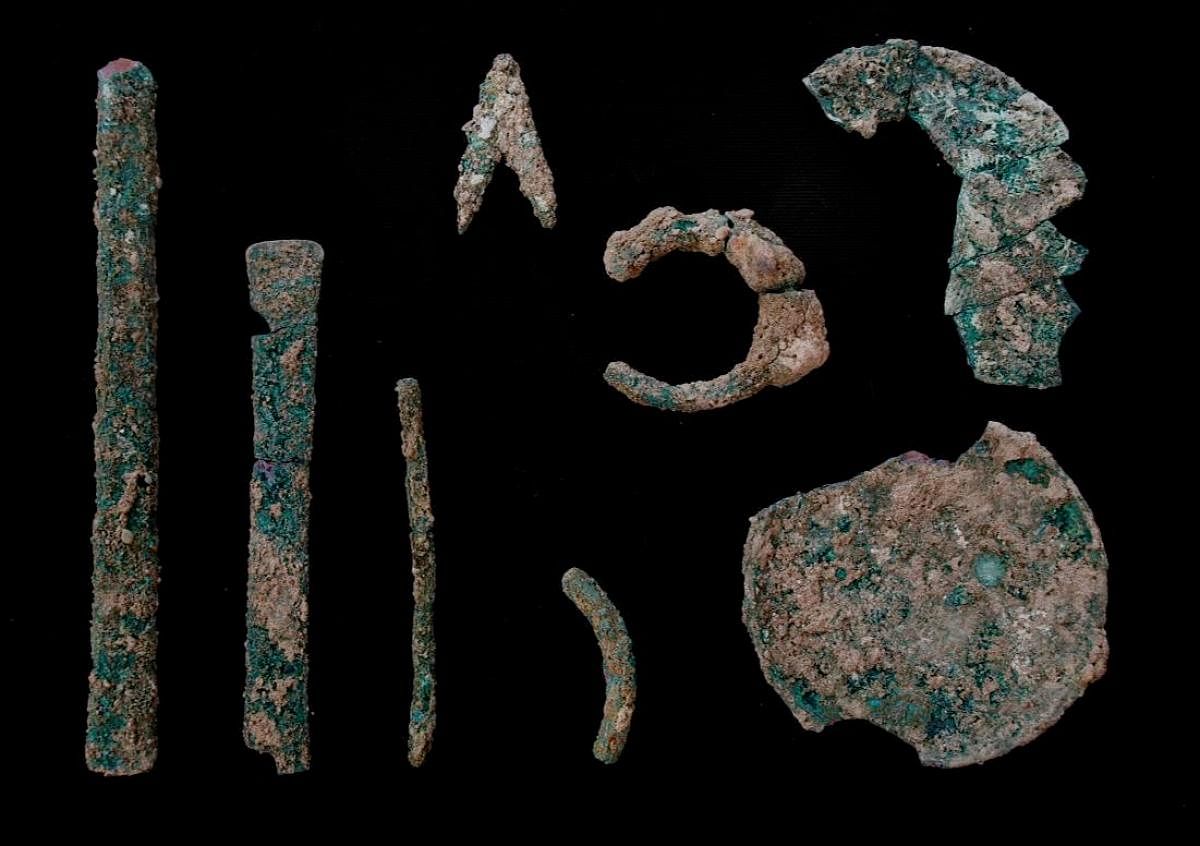

South Asian cuisine, with its signature blend of herbs and spices, is celebrated for its kaleidoscope of flavours. Our culinary practices, across regions, are intricate. Our well-stocked kitchens attest to it.
“What food we eat and how we cook it defines our cultural identity and is part of our heritage,” says Dr Juanjo García-Granero, an archaeobotanist who studies ancient plant remains at the Institución Milá y Fontanals, Spanish National Research Council (IMF-CSIC) in Spain.
In his work, García-Granero has peered into the ancient kitchens of some of the world’s oldest Civilisations to look for such hidden heritage. “Exploring prehistoric foodways allows us to peek into the traditions of ancient civilisations and understand if and how such traditions have survived to the present day,” he says.
It’s this interest that brought García-Granero to Datrana, Loteshwar and Shikarpur — three prehistoric archaeological sites in present-day Gujarat — to take a deeper look at shards of pottery vessels known to be at least 4,000-5,000 years old. García-Granero, along with a team of international researchers, studied food residues from the ancient vessels to understand what people cooked back then and how. The results of the pilot study were published in the journal Frontiers in Ecology and Evolution,
The analysis revealed that the early inhabitants of Indus Valley had many complex ways of preparing food. “We found out that not all the ingredients were processed and/or consumed in pottery vessels,” says García-Granero. “Different ingredients followed different culinary pathways — some would have been roasted or ground, whereas others were part of a wider range of dishes.”
The study found evidence of millets, pulses, wheat, barley and ginger being cooked in the vessels along with traces of fat from omnivores like pigs, birds or rabbits. However, there were no traces of dairy or fish in these vessels — a surprising find as fishing and cattle-rearing were thought to be widely practised in the region.
“This is very important work precisely because the results are somewhat puzzling,” says Prof Brad Chase, an anthropological archaeologist at Albion College, USA, who has studied many prehistoric societies, including the Indus Valley Civilisation, but was not involved in this study. “At the most basic level, this research writes a new chapter on the history of cuisine in India.”
Analysing food residues
In the last few decades, archaeologists have studied how the inhabitants of the Indus Valley grew and used cereals and pulses, such as wheat, barley, millets, rice, chickpeas and horse gram. They have also discussed the animal-based diets involving cattle, water buffalo, sheep, goats, wild deer, nilgai, and freshwater and marine fish. “One of the aspects that has been less studied is how these ingredients came together to form food or cuisine,” says Akshyeta Suryanarayanan, an archaeologist at the Universitat Pompeu Fabra, Spain, and a co-author of this study.
The researchers studied 28 ceramic vessels, including pots, vases, goblets and jars excavated from the three sites. Eleven of them were classical Harappan vessels from Shikarpur dating back to the Bronze Age period, and 17 were Copper Age pottery from Datrana and Loteshwar made by semi-nomadic farmers and herders.
They took small pieces of pottery samples, cleaned them up, crushed them to a fine powder and extracted lipids (fat molecules) left behind as “residues”. “Ceramic vessels are porous, so products put inside them are absorbed, and largely protected from microbial decay over time,” explains Suryanarayanan.
Once lipids were extracted, the researchers identified the different types of molecules present in them using mass spectroscopy. “By doing this, we can compare what we find to modern plants and animals and make inferences about the type of product in the archaeological vessel,” says Suryanarayanan.
Then, the researchers closely looked at the vessels through a microscope to identify the presence of starch grains found in edible plant parts, such as grains, seeds, fruits, tubers, etc. This study is the first to use both these techniques in analysing the food habits of prehistoric people in the Indus Valley.
Multiple culinary practices
The results show that during both the Copper and Bronze Ages, which are about 2,000 years apart, the Indus Valley people processed and cooked plants and animals similarly. They grew, gathered and traded cereals and pulses, importing a few from other regions. For example, in Datrana, 99% of the vessels revealed the presence of starch grains belonging to the family of wheat and barley.
However, these plants weren’t native to Gujarat, indicating they were brought in from other regions. In all three sites, small millets were ground with grinding stones while pulses were primarily cooked. Interestingly, the researchers also found traces of ginger in the vessels, which may have been ground and then cooked.
Chemical analysis of lipids in the vessels contained degraded animal fats — probably from pigs — which were also not known to be raised in the region. Only a few vessels contained fats, presumably from ruminants like cattle or water buffalo.
Although other studies have found evidence of ruminants widely reared during the Copper and Bronze Ages, the researchers believe their meat could have been cooked in other types of vessels that were not analysed. The same applies to dairy and fish, which were known to be used in the region but the analysis found no trace of them in the vessels.
“This and other similar studies recently conducted at Indus sites offer us glimpses on how the inhabitants of these sites treated and valued different foodstuffs,” says García-Granero. “This will potentially lead to a better understanding of the factors underlying culinary choice.”
In a country where food preferences are increasingly becoming contentious, the study reveals the varied cuisines of India’s prehistoric people.
“Many current textbook accounts of the Indus Civilisation focus on its purported cultural homogeneity, often, I believe, to implicitly support modern political visions of a culturally homogenous present,” says Chase. “This line of research will reveal the extent to which the Indus Civilisation was culturally heterogeneous.”
Watch latest videos by DH here: